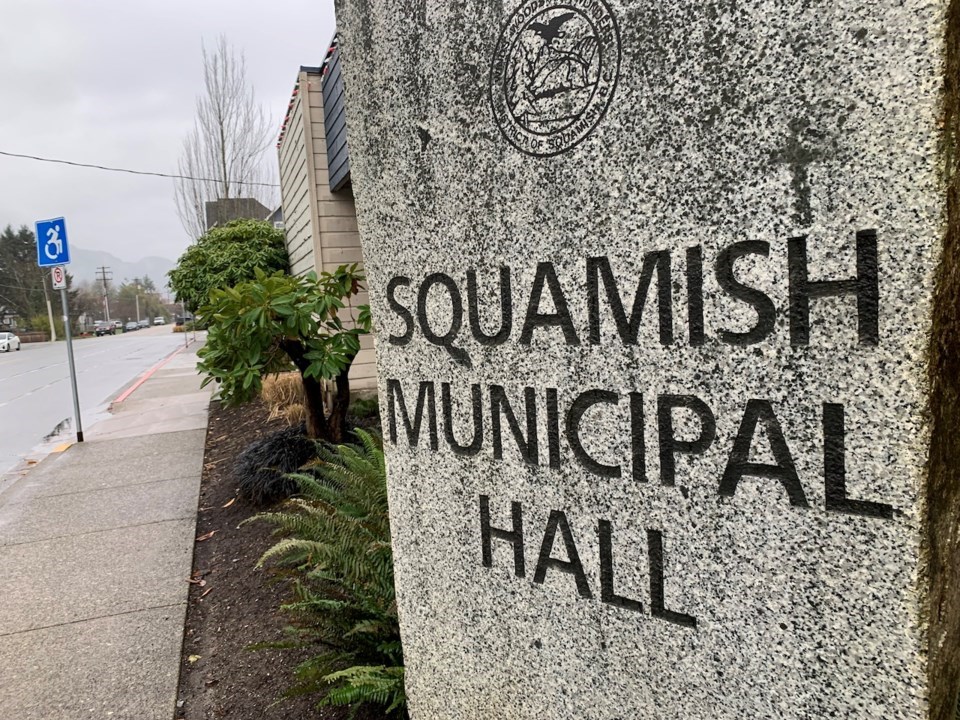Following a District motion that urged FortisBC to make its pipeline risk assessment public, officials from the utility met with municipal council in a bid to reassure local politicians.
Previously, council unanimously opined that more information about the risks involving the FortisBC Eagle Mountain to Woodfibre pipeline should be divulged by the company.
Back in May, council decided Mayor Karen Elliott would ask the province to compel FortisBC to publicly share "comprehensive details of [the] FortisBC/Woodfibre LNG Eagle Mountain Pipeline risk analysis."
Elected officials wanted to see data such as annual risk to loss of life relative to population density and distance from the pipeline; an analysis supporting a route under a roadway in an area of growing density and a comparative analysis for alternative routes in the approved corridor, among other things.
The motion also directed District staff to obtain and review CSA Standard Z663, which outlines standards for land use planning in the vicinity of pipelines.
On July 26, Fortis' director of regulatory projects and resource planning, Paul Chernikhowsky, gave a presentation to council in an effort to respond to council's request. He said the company has never had a spontaneous pipeline rupture.
(See the presentation slides here.)
"Yes, we've experienced incidents of sabotage," said Chernikhowsky. "We've had extreme river flow, crossing washouts, but we've never had a pipeline rupture like the one Enbridge had back in 2018."
Chernikhowsky said a quantitative risk assessment, or QRA, is not released publicly for security reasons.
"The QRA considers both the likelihood of events, the consequences of those events at every point along the line," he said. "In other words, if we were to make the QRA publicly available, we'd essentially be detailing exactly where you could inflict the most harm on our system. And clearly, that would not be prudent to do as an operator."
Chernikhowsky said the information is provided to Fortis' regulators on a confidential basis. No one else is allowed to view the file.
He also compared Fortis' risk assessments and the District's tolerance for the risk to loss of life in new developments.
"We can see the EGP project remains well below the broadly acceptable ranges [of risk] even in this case," Chernikhowsky said.
He cited the Official Community Plan, saying the District tolerates an individual risk of a 1:10,000 chance of loss of life for existing developments each year. Those odds are 1:100,000 for new developments.
For the Eagle Mountain pipeline, the individual risk of death as the result of equipment impact, such as a rupture, is 1:500,000,000 per year. For valve failure, those odds are 1:5,000,000.
Individual risk refers to the chance that one person will be harmed as a result of living or working near the pipeline.
There were also measures for societal risk, which characterize the odds of harm being done to a group of people.
Chernikhowsky compared the societal risk thresholds of the District and the utility.
The District considers the odds of 1:100,000,000 for 1,000 fatalities as broadly acceptable.
Meaning. they accept a one in a hundred million chance of 1,000 people dying in an accident.
When a level of risk is deemed broadly acceptable, the risk is considered low enough that no further mitigation is required.
He said the societal risk for the Eagle Mountain project is 1:250,000,000 for 300 fatalities as a result of equipment impact.
"In this case, what's calculated there was essentially the maximum possible fatalities that could result from the rupture of the pipeline based on the potential impact radius from the pipeline," said Chernikhowsky.
"It doesn't quite work this way, but I'll simplify it to say that you'd have to go 250 million years before one of those events occurred."
The Eagle Mountain pipeline project has a risk threshold of 1:1,000,000 for seven fatalities as a result of valve failure.
"To put our [quantitative risk assessment] results in perspective, a person is twice as likely to be killed, statistically speaking, in an earthquake or about as likely dying from a lightning strike as they would be from an incident on the EGP pipeline over its entire lifespan," said Chernikhowsky. "And that's even at the highest risk point on that pipeline."



